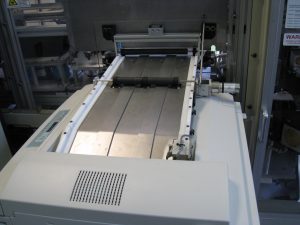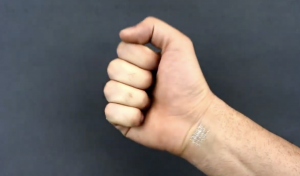What if a sticker could save your life? Sometimes, the scariest part about being sick is not knowing whether you are taking all the correct measures to monitor and treat your illness, even after the doctor prescribes medication. A number of wearable devices such as wristbands have been created to monitor our physical activity and ensure that our health is on the right track. However, these devices are typically very expensive.
Recently, a team from Purdue University in Indiana published their research in ACS Advanced Materials and Interfaces on an electronic wearable sticker. These smart stickers are a simpler and more cost- efficient version of existing electronic wearable devices available for personalized medicine.

University Hall at Purdue University. Courtesy of Flickr Commons (Bill Badzo)
Source: https://flic.kr/p/suXmh8
Both the electronic devices and the stickers can alert users of any health risks or warning signs in real time. They contain sensors that record electrocardiograms, electromyograms and electrooculograms, which measure the electrical activity produced by the heart, the skeletal muscles, and the corneas respectively. They can also provide thermotherapeutic treatments, or heat therapy, to joints.
EPEDs demonstration video. Courtesy of YouTube. Source: https://www.youtube.com/watch?v=IuKbx3xyPIk
Purdue’s new epidermal, paper-based electronic device (EPED) can also be used as implantable sensors that monitor sleep, as they can adapt to internal organs without any serious effects. They are inexpensively paper-based and made out of cellulose. Lined with serpentine shapes, which make them more flexible and stretchable, they are coated with molecules that protect them from sweat, oil, water and bacteria as well. Each sticker costs about 5 cents to produce, and only require cheaper printers likened to those used to print books quickly and efficiently.
EPED Stickers designed by Purdue University. Courtesy of Youtube.
Source: https://www.youtube.com/watch?v=IuKbx3xyPIk

Book Printer. Courtesy of Wikimedia Commons. Source: https://commons.wikimedia.org/wiki/File:On_demand_book_printer_2.jpg
As wearable devices become increasingly popular in this technological era, these stickers are a cheap and effective solution that makes personal health monitoring more accessible to all. Since they are so easy to implement and test, with growing research, they can be developed to accommodate a range of other healthcare needs in the very near future.
– Justine Law

